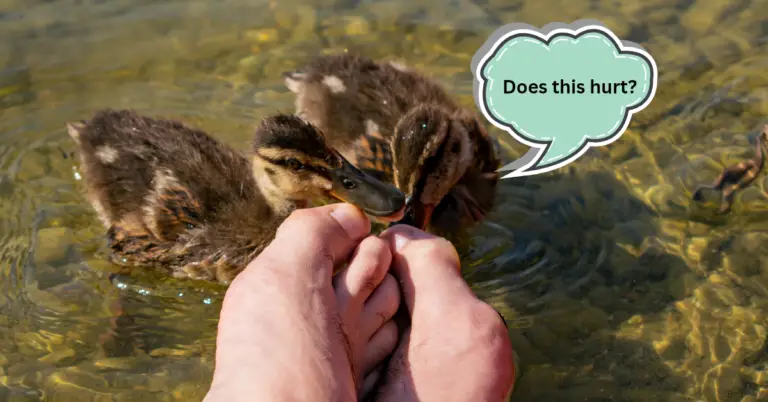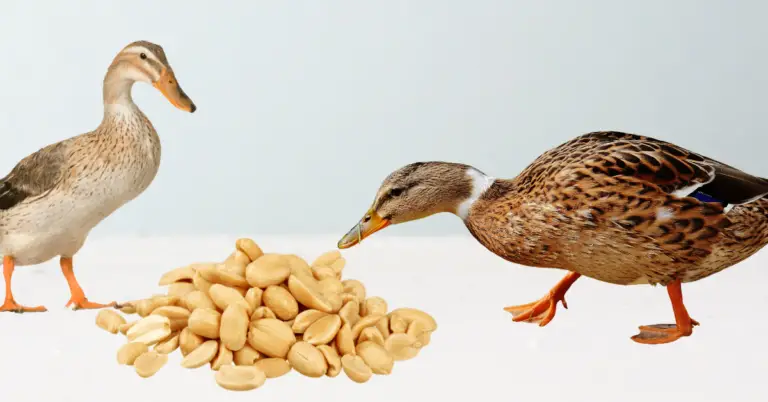Ducks are intriguing animals that make a peculiar quacking noise. Yet, have you ever pondered the quacking of ducks? Quacking is more than simply a random vocalization for ducks; it’s an essential part of their social structure, activity, and communication.
Ducks utilize their quacks to communicate with other ducks in their surroundings, including luring partners, alerting others to danger, and expressing emotions.
This article covers the explanations behind a duck’s quack, the types of quacks they make, and how understanding duck quacking may shed light on their relationships and behavior.
What sounds do ducks make?

Ducks make a vocalization known as a quack, their primary means of intercommunication. The vocal cords in the syrinx, a structure in the bottom portion of the trachea, generate quacks. By forcing air through the syrinx, they produce sound by the vocal cords vibrating. The distinctive quacking sound made by ducks is by their vocal cords vibrating, modulated by the lips and beak of the duck.
Quacking is vocalization ducks use for many functions, including social interaction, mating attraction, danger warning, emotional expression, and preserving social order. Other ducks can comprehend each quack’s intended message since each has a distinctive sound, length, and pitch.
Ducks may make a variety of vocalizations in addition to quacking, depending on the circumstance and the signal they wish to express. These vocalizations include hisses, grunts, and whistles. For instance, whereas some ducks use whistling to establish unity and interaction during flight, others employ hissing as a warning signal.
Ultimately, duck communication relies heavily on their sophisticated and vital quacking, critical for their existence and social relationships.
Types of Duck Quacks
Ducks quack in various manners, depending on the circumstance and the message they’re trying to convey. Here is a list of the popular types of duck quacks:
- Contact Call: Ducks use a quick, low-pitched quack to communicate with one another when swimming or foraging.
- Mating Call: During the mating season, male ducks generate a distinctive and melodic quack to entice females. This cry indicates that the male is eager to mate and is frequently loud and persistent.
- Alarm Call: A warning quack that ducks make to alert their fellow group members of danger. It intends to warn other ducks to be vigilant, and they typically accompany it with head movements.
- Feeding Call: Ducks use a string of quiet, low-pitched quacks to find food and communicate with one another. It is a soft call that conveys joy and contentment.
- Distressed Call: Loud and high-pitched quacks made by ducks during discomfort or distress. It is a cry that signals other ducks to assist the frightened duck.
- Greeting Call: A succession of quacks made by ducks to welcome one another. The call is exuberant and high-pitched, expressing delight and joy.
Why do Ducks Quack Continuously?
Mothers educate their offspring on making sounds, which causes quacking behavior to start as early as birth. This behavior is accomplished through a procedure known as imprinting. This talent aids the young ducks in avoiding danger and keeps them from getting lost while migrating.
Also, it ensures they can recognize their species, resulting in a protection mechanism against predators. It’s important to note that young ducks quack louder than adults.
The throat gets inflated and deflated to make the sounds. Ducks and birds create a louder variation of that sound when intimidated or pressed.
These characteristics might be seen during nest defense or courting season. Remember that generating loud noises keeps their social group together and challenges their rivals (male predators or competing males).
Reasons Why Ducks Quack Loudly
While quacking is a common vocalization for many species of ducks, not all ducks quack. Some ducks, such as the Muscovy duck, make hissing, grunting, or whistling sounds instead of quacking.
These unique vocalizations still aid communication between ducks. But they sound very different from the classic quack that most people associate with ducks. Let’s delve deeper to learn the most frequent causes of a duck quacking.
1. Communication
Animals that have developed specialized forms of communicating include ducks. Quacking is the method of communication used by ducks. Ducks quack because they use vocal communication to convey information.
They are social animals that communicate with each other in a variety of ways, including body language and vocalizations. Both male and female ducks make quacking sounds, but males tend to have a quieter and raspier quack than females.

Furthermore, ducks use quacks to convey various messages to each other. These include warnings of danger, expressing excitement or distress, and announcing their presence to other ducks. Quacking also serves as a warning to fellow ducks to be on the lookout for danger.
In addition, this sound may represent a potential danger or predator. Mother ducks, in particular, do this because they protect their ducklings. They will quack to frighten off threats and warn their ducklings and other surrounding ducks.
For example, if a predator is nearby, ducks may quack to warn other ducks to be on alert. But, if a duck feels threatened or stressed, it may emit a series of rapid quacks to signal distress to other ducks.
2. Lonely Feeling
Ducks quack when lonely, and monogamous birds are likelier to engage in this activity. A duck that separated from its spouse may quack to call them back. This sound demonstrates that ducks can understand a sentiment akin to loneliness.
3. To Attract a Suitable Mate

Ducks also use quacks to attract mates during the breeding season. It’s worth noting that not all ducks quack. However, some ducks use quacks to attract mates during the breeding season.
Male ducks will often make loud, repeated quacking sounds to attract the attention of female ducks. If a female duck gets interested, she may respond with quacks or other vocalizations.
4. To Signal Their Location to Other Ducks
Ducks quack to signal to other ducks where they are. When ducks swim in a large group, it can be challenging to see one another, so they quack to communicate.
The ducks can keep together and stay on course owing to this sound. They also act in this way in the absence of their mate; to guide their mate back to them, they will quack.
A mother duck could quack to locate a wandering duckling that has gotten lost. A female duck may be looking for her spouse because she feels lonely.
As chatty creatures, ducks may use their quacking to communicate. Ducks may quack when they are happy to see their humans and want to play or interact with them.
5. Whenever They Lay Eggs
Ducks quack as they lay their eggs. There is a reason behind the quacking. It notifies other ducks that an egg nest was constructed. It motivates them to assist with egg incubation. Some speculate that this results from the duck’s happiness and pride in its success. In the spring, ducks often deposit their eggs.
Conclusion
Ducks quack to communicate with each other, whether it’s to warn of danger, express excitement or distress, or attract a mate. Quacking is one of the many ways that ducks use vocalizations to interact with each other, and it is a fascinating aspect of these unique and interesting animals.
Now that you know this, a duck’s quack shouldn’t get you on your toes.






